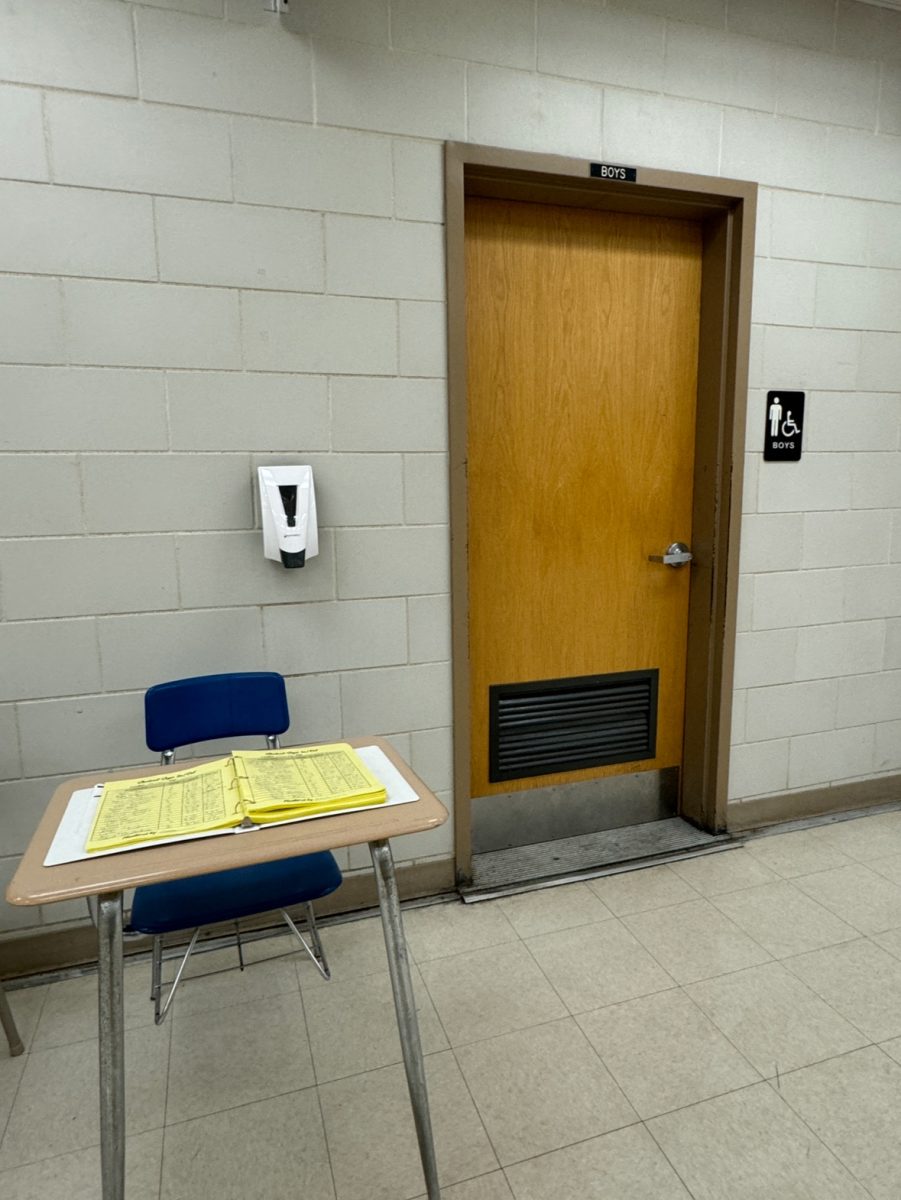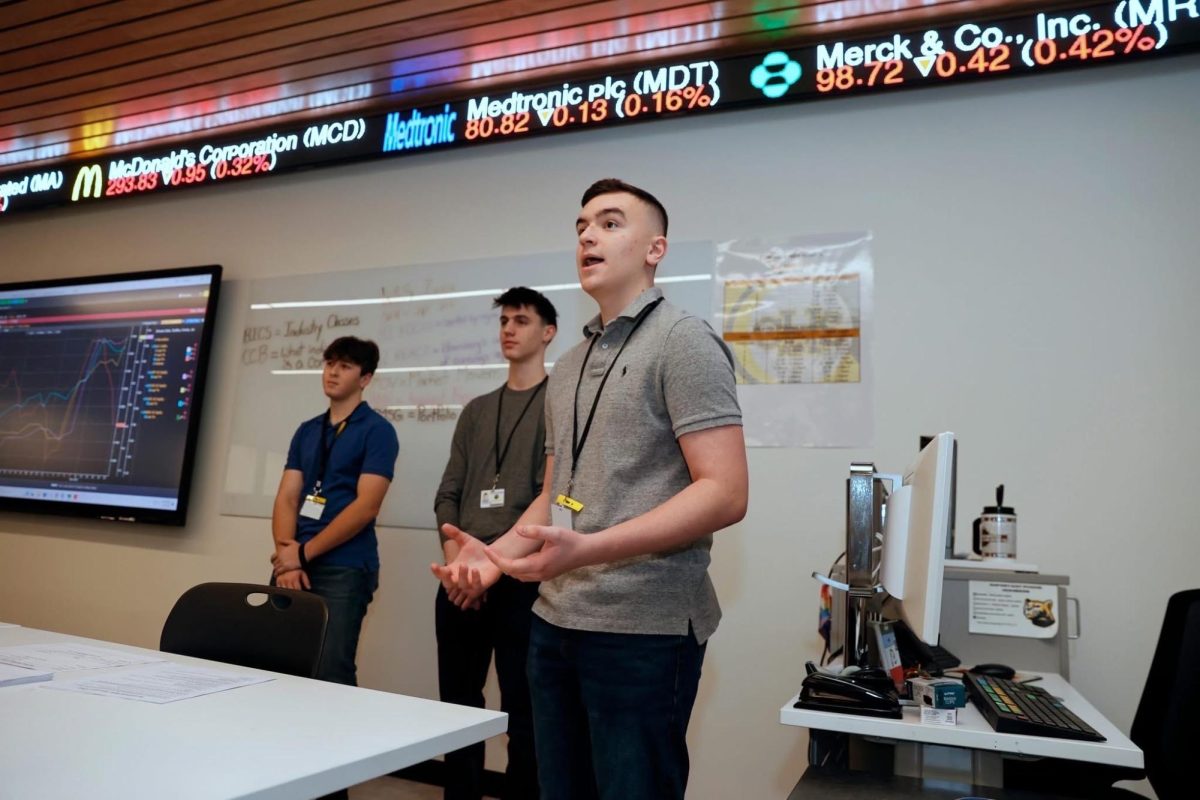New bathroom protocols have been put in place this school year to ensure security throughout all areas of the school.
Some students are unaware of the specific rules and the reasonings behind them. The main process requires student IDs to be presented and logged using the newly introduced scanners.
“They must have their student ID and a pass from their teacher. At this time, we are able to now scan student IDs that will log the day and time students are in and out of the bathrooms…,” said principal Carrie Lipenholtz.
The newly introduced scanners are a faster alternative to the manual sign in sheets first used.
“We did hear some feedback at the beginning that there were some long lines and some frustration with the closure of some of the bathrooms,” said Lipenholtz.
These digital logs allow administrators to track when and where a student used the bathroom at any time.
“…In the event of an actual emergency, like a lockdown, any administrator can instantly pull the logs and see who is in which bathroom at that exact second to account for their whereabouts,” said assistant principal Eric Biagi.
Another recurring frustration among students is the fact that bathrooms are locked during passing periods. However, because more full-time monitors have been hired, bathrooms are now open in between periods.
“We are continuing to work on hiring school monitors. We are hopeful that once we are fully staffed we will be able to open most, if not all, of the bathrooms,” said Lipenholtz.
Many are unaware that these bathroom rules have been in the works long before they were implemented.
“Our building team really talked a lot this summer about it and planned out what it could look like, but this is a process that has been in the conversation for years,” said Biagi.
Unfortunately for students that disagree with these procedures, they will continue to be enforced. Of course the administration also plans to take student feedback into account for future reference.
“We do anticipate that we will continue to monitor the bathrooms but we may see some changes based on feedback from students and staff,” said Lipenhotlz.
Among this feedback, administrators have received positive input from parents.
“Initially there were questions about the need for the change and why it came about, but once we explained it, parents have been overwhelmingly supportive…It was initially developed to curtail all negative activities in bathrooms [such as] congregation, vaping, vandalism, all things parents agree with preventing and appreciate that we are addressing,” said Biagi.
Additionally, teachers and staff have given their endorsement of these rules.
“We have received positive feedback from staff…Teachers understand the need for safety in the building and are making every effort to send students with their ID and a pass to use the bathroom,” said Lipenholtz.
Administrators are also satisfied with the payoff the new bathroom procedures have resulted in.
“We are very excited to see how well [the new rules] are working and how effective they are at achieving its goal. The best part, by far, though, is when students tell us that they feel better about going to use the bathrooms and more comfortable in the space. That’s the goal with everything we do” said Biagi.
However, not all students are satisfied with these new protocols.
“I think it’s really pushing it because now kids have to suffer the consequences of not being able to use the bathrooms if they stay after school for activities and clubs. It feels like losing the basic privilege of using the bathroom,” said sophomore Emma M.
Of course, all student feedback, positive or negative, is valid and reflective to the individual’s experience. However, it is important to understand that administrators haven’t implemented these rules with the intention of punishing all students. In fact, it’s the complete opposite.
“In speaking with a lot of neighboring districts on how they maintain the safety and well-being of students in terms of bathroom use, the use of monitoring bathrooms by a staff member seemed to be the best way to provide a safe environment,” said Lipenholtz.◼️










